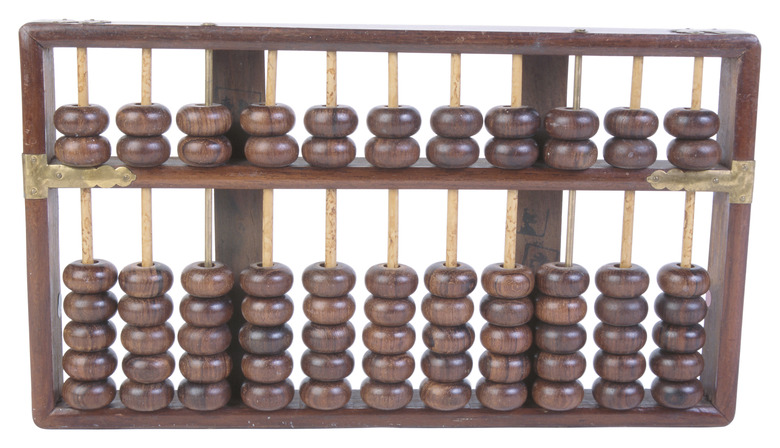How To Use Abacus
You can learn how ancient civilizations carried out mathematical calculations with the help of an abacus. A counting tool, the abacus was quite popular with Greek, Roman, Egyptian and Oriental cultures of the past, and is still used in the modern world by some people to conduct day-to-day business. Using the Chinese abacus is not very difficult, once you understand how this counting tool works. Familiarize yourself with the abacus and manipulate it to perform basic calculations such as addition and subtraction equations.
Step 1
Familiarize yourself with the layout of the Chinese abacus which has several columns of beads that are separated by a crossbar. The five beads below the crossbar represent one unit each, while the two beads above the crossbar represent five units each. The beads that you push against the bar will represent the numbers that you are calculating.
Step 2
Understand that each column has a decimal value attached to it. The first column on the right represents a decimal value of one, i.e. digits from 1 to 9; the second, ten decimals; the third, hundred decimals; and so on.
Step 3
Set the abacus at "zero" or "start" mode by moving all the beads away from the crossbar. If a bead is positioned near the crossbar or towards it, it implies that the abacus has been activated and has a value.
Step 4
Add numbers on the abacus by registering them on the beads in the same straight-forward left-to-right sequence that you would write them in. To add 6+2, move one bead down from the first column situated above the crossbar which represents five units. Move one bead up from below the crossbar, which represents one unit. This placement on the abacus represents six digits. Move two beads up toward the crossbar, from the lower portion of the same column, to arrive at the total value of eight digits, which is obtained by reading the position of the beads on the abacus.
Step 5
Subtract numbers by first representing the number to be subtracted on the abacus, and moving beads away from below and/or above the crossbar. To subtract 9-7, first place the digit 9 on the abacus. Move one bead situated above the crossbar, representing five units, and two beads situated below the crossbar away from it. The remaining two beads represent your result.
TL;DR (Too Long; Didn't Read)
Manipulate the counters on the abacus with your thumb and index fingers. Use your thumb to move the counters upward toward the divider, and your index finger to move the counters downward and away from the divider.
Warning
Even though the abacus has demonstrated its advances over the calculator to provide quick and accurate additions and subtractions, it is not as fast or effective as the calculator in accomplishing multiplication and division tasks.
Cite This Article
MLA
Barretto, Esperance. "How To Use Abacus" sciencing.com, https://www.sciencing.com/use-abacus-5345934/. 24 April 2017.
APA
Barretto, Esperance. (2017, April 24). How To Use Abacus. sciencing.com. Retrieved from https://www.sciencing.com/use-abacus-5345934/
Chicago
Barretto, Esperance. How To Use Abacus last modified August 30, 2022. https://www.sciencing.com/use-abacus-5345934/
